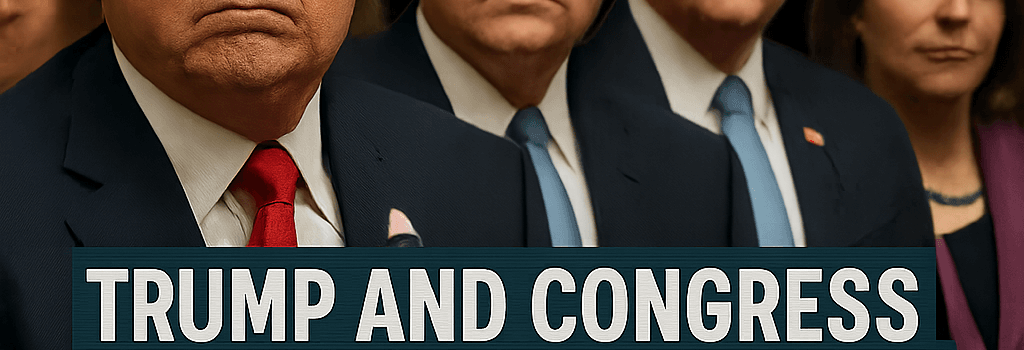Trump and Congress Finalize Spectrum Law Affecting Wi-Fi

The energy behind the new legislation marks a significant pivot in U.S. spectrum policy, potentially reshaping wireless connectivity for consumers nationwide. By reviving the FCC’s auction authority—which lapsed in 2023—Congress has mandated a minimum of 800 MHz to be assigned to licensed operators, setting the stage for mobile carriers to bid on frequencies that today underpin next-generation Wi-Fi.
Zero-Sum Spectrum Game
Under the final budget bill, at least 500 MHz must come from federal users and a further 300 MHz from non-federal allocations. With limited clear bands in the 1.3–10.5 GHz range, the FCC is effectively forced to choose between unlicensed bands like the 6 GHz Wi-Fi expansion and the Citizens Broadband Radio Service (CBRS) at 3.55–3.7 GHz. Each megahertz carved away from unlicensed use tightens the bottleneck for home and enterprise Wi-Fi as demand continues to surge.
Key Provisions of the New Law
- Restoration of auction authority: FCC regains power to auction spectrum after a two-year lapse.
- Mandated spectrum carve-outs: Minimum 500 MHz from federal bands; at least 300 MHz from non-federal, including a 100 MHz slice within 3.98–4.2 GHz.
- Targeted frequency ranges: Potential auction pools include 3.55–3.7 GHz (CBRS) and parts of 5.925–7.125 GHz (6 GHz Wi-Fi band).
- Tax incentives: Investment credits for carriers deploying advanced wireless infrastructure, offset by revenues from spectrum auctions.
Technical Deep Dive: 6 GHz Band and Wi-Fi 6E
The 6 GHz band spans 1,200 MHz between 5.925 and 7.125 GHz, which was opened for unlicensed Wi-Fi 6E use in April 2020 under then-Chairman Ajit Pai. Wi-Fi 6E devices leverage 14 additional 80 MHz channels and seven full-width 160 MHz channels, supporting theoretical throughput up to 9.6 Gbps per radio link. Key technical safeguards include:
- Automatic Frequency Coordination (AFC): A cloud-based database that dynamically assigns power levels and channel blocks to prevent interference with incumbent users.
- Power limits: Up to 36 dBm for fixed point-to-point links, and 30 dBm EIRP for standard indoor and outdoor access points under AFC control.
- Signal propagation: Higher frequencies in 6 GHz exhibit greater path loss, emphasizing the need for line-of-sight or mesh network deployments in dense urban settings.
Implications for Rural Broadband and CBRS Ecosystem
Small and rural internet service providers (ISPs) have widely adopted CBRS and 6 GHz to deliver cost-effective broadband where fiber is scarce. CBRS operates under a three-tiered model:
- Incumbent Access: Federal radar and fixed satellite services with highest priority.
- Priority Access Licenses (PAL): Licensed block assignments up to 70 MHz of contiguous spectrum per market.
- General Authorized Access (GAA): Unlicensed, opportunistic use of any unused CBRS channels.
Deployments utilizing Citizens Broadband Service Devices (CBSDs) have achieved up to 150 Mbps in field trials over 10 MHz channels. Auctioning CBRS PALs could drive up prices and limit midband spectrum affordable to community networks.
“The vast majority of WISPA members rely on CBRS and 6 GHz to connect under-resourced areas,” said Jason Whittet, CEO of the Wireless Internet Service Providers Association. “Auctioning these bands threatens to reverse years of rural broadband progress.”
International Spectrum Allocation and 5G Trends
Globally, regulators in Europe and Asia-Pacific have earmarked the upper 6 GHz band (6.425–7.125 GHz) for licensed 5G services, citing its balance of capacity and coverage. For instance, Japan’s Ministry of Internal Affairs and Communications plans to auction 500 MHz of 6.6 GHz for 5G by end of 2025, while the European Conference of Postal and Telecommunications Administrations (CEPT) released harmonization reports favoring unlicensed sharing in the lower 6 GHz segment.
The United States has historically led on unlicensed innovation but now faces pressure to align with international midband strategies to stay competitive in 5G deployment and telecom manufacturing.
Expert Opinions and Regulatory Outlook
Following the law’s enactment, CTIA—led by former FCC Chairman Ajit Pai—applauded the move:
“This legislation secures America’s leadership by fueling wireless networks with essential midband spectrum,” stated Pai. “Tax provisions will drive job creation and infrastructure investment.”
Conversely, public interest groups warn of consumer impact:
“Selling off half of the unlicensed 6 GHz spectrum could degrade Wi-Fi performance for millions,” argued Harold Feld, senior VP at Public Knowledge. “Regulators must balance revenue generation with preserving open spectrum for innovation.”
FCC Chair Brendan Carr has initiated planning for the auctions, with formal Notices of Proposed Rulemaking (NPRMs) expected in late 2025. Industry observers will closely watch how the FCC navigates incumbent relocation, interference mitigation, and auction design—particularly dynamic licensing models that could blend licensed and shared access.
Looking Ahead
The coming months will determine whether the U.S. maintains its unlicensed leadership or shifts toward a more carrier-driven spectrum paradigm. For consumers, the key questions revolve around network speeds, device compatibility, and potential costs of transitioning equipment to modified frequency allocations. Stakeholders have until January 2026 to file comments with the FCC before final auction rules are adopted, setting the stage for a landmark decision in spectrum policy.